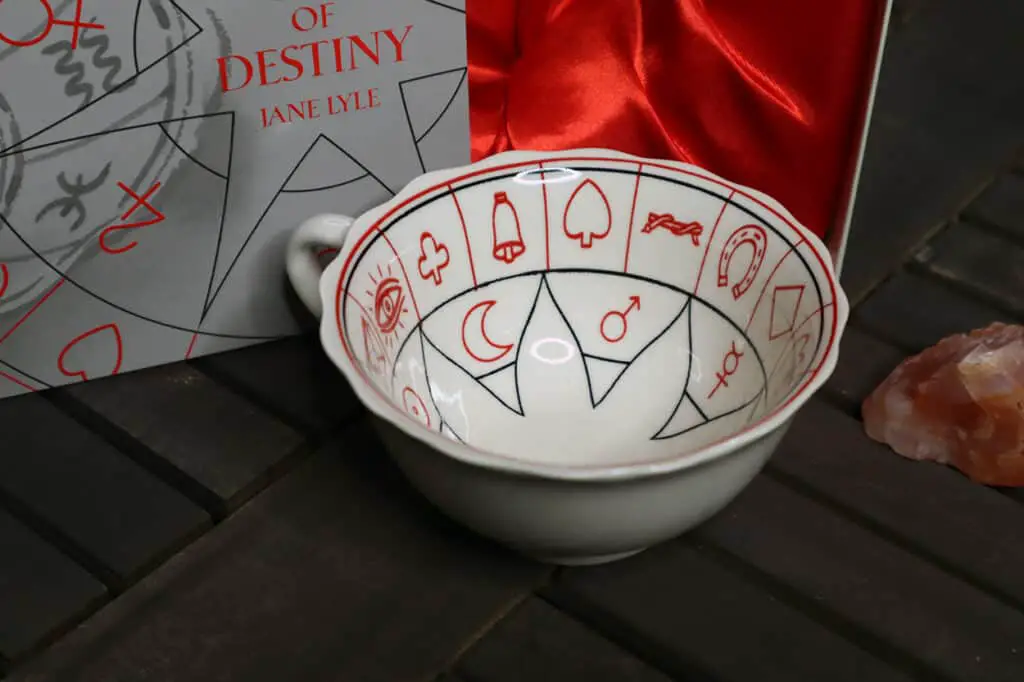Tea leaf reading, also known as tasseography or tasseomancy, is done after you finish a cup of loose-leaf tea. The tea leaves will line the bottom and sides of the cup and the shapes they form are said to be influenced by the person who is drinking the tea. This can then be used as a form of divination (aka fortune-telling).
While not as popular as tarot readings, tasseography is an interesting form of divination to turn to when cards just don’t feel right. Plus, who doesn’t love a cozy cup of your favorite tea?
Our team tests, researches, and carefully curates all our recommendations. This post may contain affiliate links. We may receive commission on purchases made from our links at no additional cost to you.
Can You Read Your Own Tea Leaves?
Yes, you can read your own tea leaves. In fact, as with all types of divination, learning firsthand is the best way to go about developing your understanding of tasseography. You’ll want to learn about the shapes and images you might find in your cup and also understand the meanings of commonly spotted symbols to help you better understand what appears in your leaves.
It can be helpful to start with a cup that is marked for easier reading. Our go-to here at Opulent Charms is the Cup of Destiny. This is the perfect introductory cup to tea reading as it presents you with a marked cup. You’ll feel less in the dark with the guidance this cup provides.
Do You Need a Special Cup to Read Tea Leaves?
While you can read tea leaves with any cup, there are a few characteristics in tea cups that make tea reading easier. You’ll want to select a cup that is white or light in color. The cup should be void of patterns on the interior.
You’ll also do best with a teacup that has slightly sloping sides rather than a typical coffee mug-style cup that has straight sides. This allows the tea leaves to move around freely as you drink the tea.
When Did Tea Reading Become Popular?
The true origination of tea leaf reading is unknown, however, historians believe it likely began in Asia. In the Western world, tea reading became popularized in England circa the 17th century. This was a practice thought to be done most commonly by elite women.
What Materials Do I Need to Read Tea Leaves?
If you’re ready to give tea reading a go, you’ll need only two items: a teacup with a saucer and loose-leaf tea.
As mentioned previously, the teacup should be a true teacup (not a coffee mug). You also want to make sure it comes with a saucer.
We recommend the Yesland Royal Tea Cups and Saucers as good options for tasseography as they have a white saucer and white interior.
Then, you’ll need to select a tea that works well for reading and that you will enjoy drinking. You can’t use tea bags for tea reading unfortunately as these are quite easy to find. Instead, look for loose-leaf tea that has broad leaves. You don’t want to use loose leaf tea that is too broken down, it needs to have larger pieces for better readings.
We recommend Solstice Tea Traders Vanilla Black Tea. If you’re new to tea drinking, it’s best to start with a sampler so you can learn what you do and don’t like as tea is never one-size-fits-all. Our recommended loose leaf tea sampler is the Tiesta Tea Discovery Tea Sampler Set for those who like fruity and unusual flavors. For those who like to keep it traditional, we suggest the Solstice Tea Traders Loose Leaf Tea Sampler.




